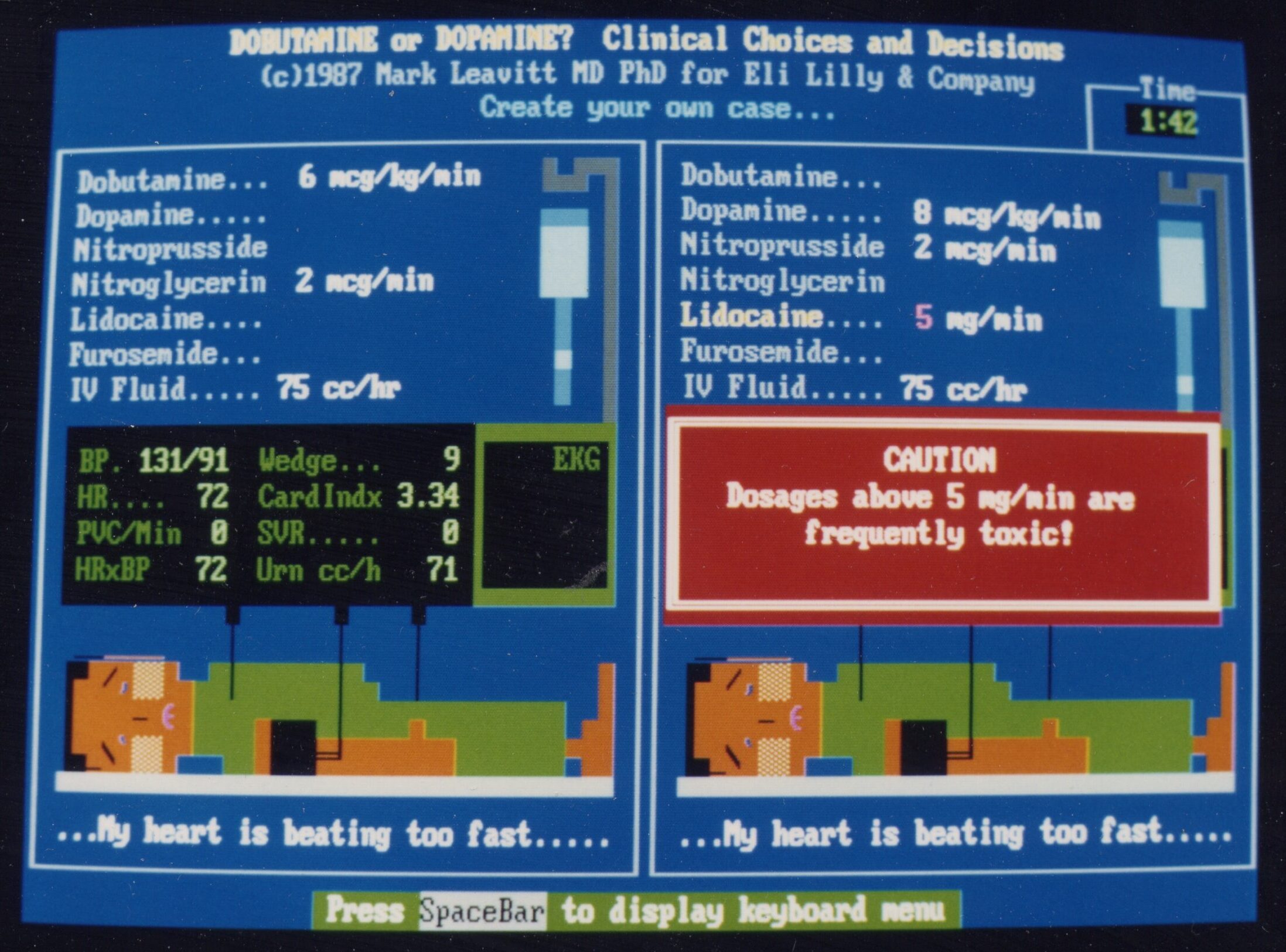1981-1989
Clinical Simulations on the Apple ][+
The Apple II+ personal computer appeared during my residency (1979-1982) and I wanted one badly. Susie feared it was just an expensive toy ($1200 was more than a month’s pay for a resident) but gave in, bless her soul. After playing with the Flight Simulator program, I became convinced that clinical simulators could be useful — and even fun — in medical education. So off I went on this side project during any spare time I could scrape together.
By the time I finished residency, I had created HeartSim, a cardiac electrophysiology simulation, and Condition Critical, an intensive care case simulation. I installed them on a computer in the ICU’s call room so fellow residents could try them out, but they attracted even more attention from sales reps of medical device and pharmaceutical companies. They wanted customized, trademarked versions for use at convention booths.

MedicaLogic is born
I created the customized program, adding a scoring system based on the player’s treatment efficacy: student, intern, resident, attending, and so on. Viewing this as a fun educational project, I offered the Eli Lilly reps the software on cassette tape (as a floppy disk drive was beyond my budget) for free. But they needed multiple copies, on diskettes, so we turned it into a barter deal: they bought me a disk drive, and I delivered the program on floppy disks.
After the convention, I heard that the convention organizers had asked Lilly to close down the simulation games during presentation hours, because attendees were lining up to play these games instead of going to the presentations. Apparently, when experienced physicians received a “student” rating, they kept coming back to play until they could level-up to the status they deserved!
I incorporated MedicaLogic in 1985 to put this activity on a more robust business footing. Eventually there were simulations for diabetes, cardiac transplantation, infectious disease, and other clinical scenarios. When Lilly learned I was working on Electronic Medical Record software, a new chapter would begin.